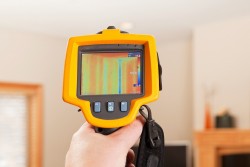Much discussion has been made within the offsite sector about achieving a 60-year lifetime design (equating to two mortgage spans) for modular housing, but what happens after this? If we assume that a prospective purchaser obtains a 30-year mortgage and lives in the house for 30 years and a second purchaser also obtains a 30-year mortgage, then what is the value of the property at the end of this second mortgage period if its useful life is assumed to be over? Is the house no longer mortgageable or does it now require recladding?
Prospective purchasers of pre-owned modular housing may ask whether the house has retained its purchase price plus inflation at the end of its 60-year lifetime and if it has not, why would they invest? Mortgage lenders may also question lending money on a pre-owned modular house if it is less than 30 years from its 60-year lifetime.
A potential solution to the question can be found by putting in place a maintenance schedule which would incorporate an inspection and monitoring programme for the building over its lifetime. The schedule could be put in place prior to the initial 10-year ending period which in effect sees the traditional insurance warranty of the building finish. This would allow any material problems to be solved by the guarantee body and not the homeowner. Inspections could then be on 10 yearly repeating cycles, and would focus on both the environmental performance of the building envelope as well as the structural components and fabric of the modular sections. As the building is occupied, non-invasive investigative techniques could be employed to preclude any disturbance to the homeowners. This may include Ultrasonic testing (UT) of wall sections to ensure that no degradation is taking place and moisture values could be taken from the base of the modular units to determine whether water ingress is taking place. Thermographic readings could also be taken to determine if heat loss characteristics had changed over time.
The results of the survey would provide an assessment of the condition of the components. If the components were found to be damaged or failing, they could be replaced to the manufacturer's standards.
Recording the ongoing monitoring and replacement of damaged components in a 'log book' would ensure a history of the house is officially recorded. These activities would provide a basis for a new owner and mortgage lender to determine the value.
If manufacturers were to implement a tool such as a 'log book', this could help to reverse the old preconceptions of modular homes having a limited lifespan and gain the confidence of both the mortgage lender and homeowner.
Find out more about Lucideon and its services for the offsite and modular buildings sector here.









